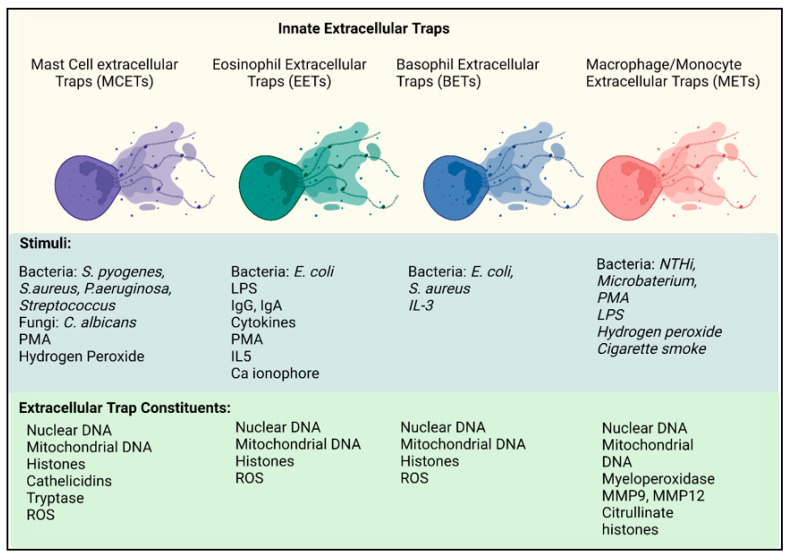Figure 4.
Innate extracellular traps. Mast cell extracellular traps (MCETs, purple) are stimulated by a range of pathogens including bacteria, fungi, PMA, and hydrogen peroxide. Once formed, MCETs consist of both nuclear DNA, mitochondrial DNA, histones and mast cell specific granules, tryptase, and chymase. Eosinophil extracellular traps (EETS, green) are simulated by bacteria, LPS, immobilized IgG and IgA, cytokines, IL-5, PMA, and Calcium ionophore. EETs are composed of DNA from both nuclear and mitochondrial origin, containing histones and ROS. Basophil extracellular traps (BETS, blue) are activated by bacteria and the cytokine IL-3. NET constituents are similar to that of EETS. Macrophage/Monocyte (METs, red) are activated by bacteria, PMA, hydrogen peroxide, and cigarette smoke. The webs contain nuclear DNA, myeloperoxidase, proteases: MMP9 and MMP12 and citrullinated histones. Figure created in Biorender.

